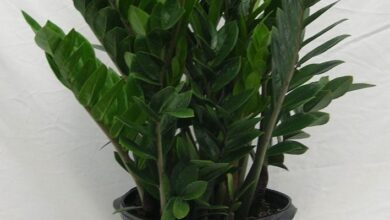Is it a dracaena or a yucca – How to distinguish a yucca from a dracena
He was therefore given a plant with thorny leaves, but no other information, including the name of the plant. It looks like a dracena or a yucca, but you have no idea the difference between a yucca and a dracena. How can you tell which one it is? Read on to find out how to tell the difference between a yucca and a dracena plant.
Yucca vs. Dracaena
What is the difference between yucca and dracaena? While both cassava and dracaena have long, pointed leaves, that’s where the differences between the two end.
First of all, cassava comes from the agave family and is native to Mexico and the southwestern United States. On the other hand, dracena is a member of the Asparagaceae family, which includes 120 other species of succulent trees and shrubs.
How to distinguish a yucca from a dracena
What are the other differences between yucca and dracena?
Cassava is most often grown outdoors and dracena is very often grown indoors. However, both can be grown both indoors and outdoors, depending on the region and the type of crop. Dracena thrives indoors and even does well outdoors as long as the temperature is around 70°F. As soon as temperatures drop below 50 F. (10 C.), but the plant suffers cold damage.
Cassava, on the other hand, is native to the hot and arid regions of the Americas and the Caribbean. It would therefore be expected to prefer warm temperatures, which it does for the most part; however, it tolerates temperatures up to 10 F. (-12 C.) and can be planted in many climates.
Cassava is a small tree or shrub covered with pointed, sword-like leaves that grow to a length of 30 cm. The foliage on the underside of the plant is usually composed of brown dead leaves.
Although dracena also has long, pointed leaves, they tend to be stiffer than those of cassava. They are also darker green and, depending on the cultivar, can even be multicoloured. Dracena also tends, although not always, depending on the cultivar, to have several trunks and to look much more like a real tree than a cassava.
There is indeed another similarity, apart from the pointed leaves, between cassava and dracaena. Both plants can grow quite tall, but since the dracaena is more of a houseplant, the size and choice of grower usually keeps the plant at a more manageable height.
In addition, in dracena plants, when the leaves die, they fall off the plant, leaving a characteristic diamond-shaped scar on the stem of the plant. When the leaves die on cassava, they tend to remain attached to the trunk of the plant and new leaves come out and grow on them.

